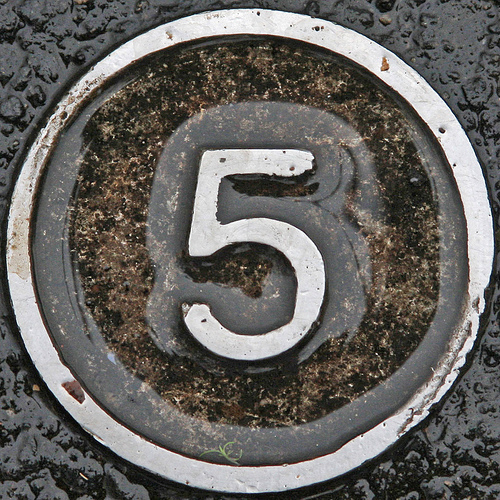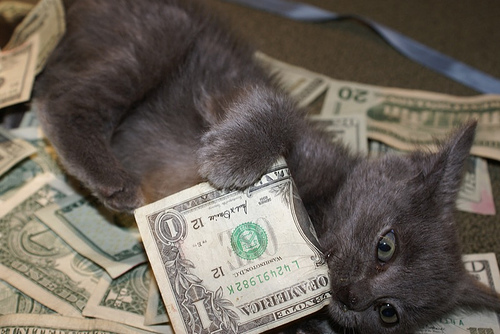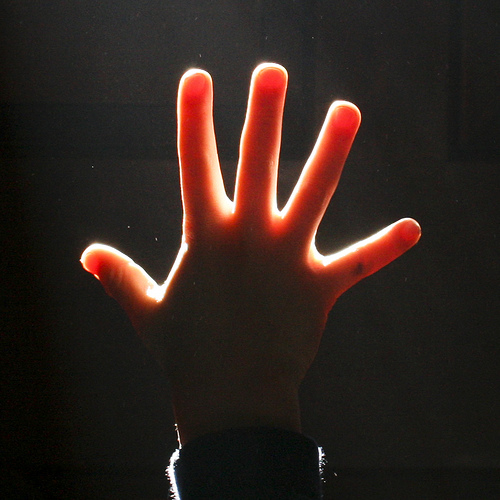Indie Author Learns Something New Every Day
I’ve been featuring guest bloggers who’ve had some success with self-publishing, in print and with ebooks. Some have been traditionally published and others have ventured out as indie authors. By having many authors writing in various genres around the world speak about the publishing experience and sharing helpful tips, hopefully their insights and suggestions will smooth out your road to success.
Today’s guest post is by author Elaine Orr:
I started out trying to sell fiction to traditional publishers. Sometimes an editor or agent would write a paragraph about what they liked and say it “just wasn’t for them right now,” and I appreciated their encouragement. Finally, I decided to just write what I liked and created a cozy mystery series with a set of characters who like some of the things I enjoy (living near the beach) and have a similar quirky humor. Nothing autobiographical, just fun to write. Luckily, the first book of the Jolie Gentil Cozy Mystery Series did not sell to a traditional publisher, so I stopped submitting after a few tries and wrote the next two books. As I did so, I developed the characters more fully and ended up changing the first book (Appraisal for Murder) a bit.
Important Things I’ve Learned
At that point, independent electronic publishing was possible and Create Space made on-demand paperbacks a less expensive reality. Here are some things I’ve learned that may be useful to others:
- Just write. Initially you can’t think about selling, the money you’ll make, or an interview with David Letterman or your local radio station. If you are not wedded to writing, you will fritter away what free time you have.
- Pay a proofreader. The first or second draft of a book is not likely to be very polished, and a traditional publisher would not let it out the door. If you do, you risk a couple reviews that comment on a meandering writing style or the number of typos.
- Study eBook publishing requirements even harder than those of a print publisher. You must transfer your book into a program with no formatting (such as Notepad in the Microsoft programs). If you do not do this, your ebook will be full of mysterious changes in font or type size. You need to put it into Notepad and then back into your word processing program and redo all special fonts (italics) or spacing. Do not move the file to another computer as it will again acquire odd fonts and such. Yes, it’s tedious. That’s life as a publisher.
- Pay a proofreader.
- Read the Smashwords Style Guide. It does meander, but Mark Coker has written it in a breezy style so you keep reading. I have looked at the guides on Kindle, BN, and Kobo, but everything I needed to know was in the Smashwords guide. That said, if you are doing an illustrated book for one of the newest e-readers (such as Kindle Fire), a retailer’s style guide has very specific instructions.
- Pay a proofreader.
- Think about whether you want to publish separate editions for Kindle, BN, Kobo, Apple or others. Smashwords is an aggregator–they convert your book and all retailers, except Amazon will use the Smashwords editions and pay through them. I sell through Smashwords and now do list some titles separately on some other sites. You get a larger royalty. However, I spend more time than I like loading books.
- Have a professional do your book cover. Smashwords has a list of referrals (not recommendations), and a Google Search will turn up hundreds. Prices for eBook covers are reasonable. I have done a couple of my own covers and you can tell the difference.
- Pay a proofreader.
- Send copies of your book for reviews (by professionals or other writers) several weeks before it reaches ebook retailers. Send to friends, but don’t ask them to write a glowing review. It’s tacky. You can ask them to read a book quickly and post a review on several sites. Look for sites that review your genre and pester them, as well as local papers. Aim high–send it to leading papers and trade publications too.
Once your book is posted, there will not be hordes of people making an electronic cash register go ka-ching. Your book may be so engaging that the first few readers write glowing reviews and someone mentions it on a cable talk show. Don’t bet on it. Read books and articles on marketing your self-published book. I recommend Jeffrey Marks’ Intent to Sell: Marking the Genre Novel. It is available in print and as an ebook.
Give yourself a set amount of time to deal with social media and traditional marketing each day or week and stick with that. There is a black hole that eats time spent on social networking sites, and the law of diminishing returns is in full force. Tell your friends and colleagues what you write. In a monthly e-mail I say what I’m working on and mention any new sales channels. I include one or two very short points that do not relate to marketing and encourage people to say if they do not want to receive the monthly e-mail. I may add someone without asking (such as someone who sends a fan e-mail), but if you add people who barely know you it will tick them off.
What About Amazon KDP Select?
Should you enroll your eBook in Amazon’s KDP Select program? If so, the ebook cannot be listed anywhere else for 90 days, and Amazon checks. You are able to give your book away for five days during that time. Why would you do that? Because it generates interest in your book and can lead to more sales for that and your other books. Most authors I know find KDP Select worthwhile. Schedule your free dates at least a week in advance, and do tons of advance publicity. Most people do a couple of two-day free events; do not use all five free days at once. Your book will likely rise quite high on the Kindle Free Books list for your genre.
Appraisal for Murder came out in October 2011, and I gave away several thousand copies through KDP Select and then it went to number 40 in paid Kindle ebooks for women sleuths. It’s not a New York Times ranking, but it definitely made my bank account happy. And it was fun.
I experiment with pricing. My ebooks are $2.99, except the first book in the Jolie Gentil series. It draws readers into the series so I keep it at 99 cents. If you list a book on Amazon for $2.99 (the lowest point to get a 70% royalty from Amazon, rather than 35%) and list it for less elsewhere, Amazon will match the lower price. However, because you listed it for $2.99 at Amazon you still get a 70% royalty. Thus, I put the lower price on Smashwords. Amazon explained this to me when I asked why they were paying a higher royalty than I expected when the book was 99 cents.
I have only anecdotal experience about how taking books off KDP Select affects sales. I could be wrong, but I think books come up lower in a search (for example, mystery writers with women sleuths) if they are not enrolled in KDP Select. I saw lower sales when I took most books off KDP Select. I now keep at least one on and will likely put each Jolie Gentil series book on KDP when it is first released.
What I Need to Do Better:
- Create a true press package (complete with book blurbs, photo, bio, and more) and send it to every media outlet in my state
- Visit bookstores and be cheeky about asking if I can do a book signing or perhaps bring a group of authors to the store for one
- Stop talking about marketing and get back to writing
 Elaine L. Orr writes fiction and nonfiction and recently introduced the Jolie Gentil cozy mystery series. Jolie is a real-estate appraiser, a profession that lets her meet a lot of people and gives her an opportunity to get into a lot of trouble in her New Jersey beach town. The first book in the series is Appraisal for Murder, then Rekindling Motives and When the Carny Comes to Town. She has written plays and other light mysteries, and Biding Time, which is geared to young adults, and was one of five finalists in the National Press Club’s 1993 fiction contest, the club’s first. Her books are at Amazon, Apple, and most e-retailers, and in paperback. Check out her web page, her Amazon Author Page, and her blog.
Elaine L. Orr writes fiction and nonfiction and recently introduced the Jolie Gentil cozy mystery series. Jolie is a real-estate appraiser, a profession that lets her meet a lot of people and gives her an opportunity to get into a lot of trouble in her New Jersey beach town. The first book in the series is Appraisal for Murder, then Rekindling Motives and When the Carny Comes to Town. She has written plays and other light mysteries, and Biding Time, which is geared to young adults, and was one of five finalists in the National Press Club’s 1993 fiction contest, the club’s first. Her books are at Amazon, Apple, and most e-retailers, and in paperback. Check out her web page, her Amazon Author Page, and her blog.












Thanks for the advice, especially the Jeffrey Marks book on marketing which I bought straight away 🙂 I’m getting my novel into shape for publication soon, and all advice gratefully received, especially on the marketing front.
So once again, Susanne, thanks a million for your fabulously helpful blog!
I’m so glad you find it useful. I have plugged it several times. It’s excellent, and does not meander, so you get something good on every page.
Thanks, Deborah! Glad this is all helping you in your writing life!
Great advice, Elaine. I particularly agree with “be cheeky about asking.” You’ll never know unless you ask, and the worst the can say is, no. Also “Pay a proofreader.” I think you mentioned that 😉 Worth every dime. I appreciate you sharing your KDP Select experience. It’s all a big experiment and we’re learning from each other.
I wrote an article about avoiding typos, and I still make them. Even in this article I say “if” instead of “of” one time. I only read this piece three or four times before sending it in… 🙂
I fixed the typos, but even I missed them because I was out of town and only skimmed through it before it went live! My bad too!
I was a magazine editor for a few years. It was only after I had the published issue in my hands that I could see clearly. My vision problem continues today with blog posts!
Excellent post Elaine, specially about KDP select and restricting social networking the better to write. Any equivalent of Jeffrey Marks on selling non-fiction…not the obvious ‘how to’ but more philosophical and without a single ‘this will be good for you’ handle?
Years ago I used Bestselling Book Publicity, put out by Author 101 (authors Rick Frishman and Robyn F. Spizman). However, it’s not that many years — came out in 2006 and does discuss blogs and websites. The principles in Jeff’s book apply anywhere, and he does write some nonfiction. Create Space even has a section for this, and I have found it useful. Come to think of it, so does Smashwords. Enjoy.
Good advice, Elaine. The part about getting rid of all formatting by pasting into Notepad and then back into Word is super-important. All the strange formatting stuff does not show up in Word, even with “show formatting” clicked — and it sometimes doesn’t show up in the ereader previews, either. But it can sure make a mess of the final product.
I’ve actually stopped reading ebooks when the font shifted midstream, where there were frequent hard rights and indents in the middle of a paragraph, or — one memorable case –when the entire text of the book was centered. Yeah, if the story’s good enough I’ll keep going — but if it’s marginal, the formatting can be the difference between turning the page and turning to another story.
Hear, hear. I’ve heard people say “it takes to much time” to put a book into Notepad and then put in the formatting again, but it’ll take twice as long to correct things (and you’ll never get it all) if you don’t.
Alternatively, using a program like Scrivener will prevent this since it compiles your document from a notepad like interface to begin with.
This is wonderful advice. Thanks to both of you, C. S. and Elaine, for taking the time to get it out. I hadn’t read much about making up a press kit for self-published books, but I think it’s a great idea. And, as Elaine points out, you can’t do too much proofreading, and when it comes to a book, best to hire a reader, for sure.
Wow, Elaine! You have some great tips on eBooks and KDP Select. It’s a treat to get info that is short and to the point! Thanks and good luck!
I keep learning as I go. Happy to share, and know there is a lot more to learn.
e
Hi Elaine, (waving to Leigh!)
I love Mark Coker’s Smashwords guide and also Calibre for conversion.
As for Word, it’s the Program That Shall Not Be Named around our house. I still write in WordStar for DOS.
Ha! I had that program, did not know it was still available. I have my old WP for DOS. Simpler is definitely better. I write with Word 97-03. I think the fact that most sits will not accept documents in the newer versions tells you they have over-complicated it. (To use a word no English teacher would endorse.)
e
Great article with very helpful advice. I particularly like (and need) your last line, “Stop talking about marketing and get back to writing.” Thanks, Elaine and C.S., for posting this!
Great advice, thank you. I still have typos in my book Every Why – mainly punctuation, which some reviewers have picked up, even after being proofread many times. I am now having it proofread yet again,will make all corrections and re-issue it. I have also just read an ebook about writing your first novel and in that the point is hammered home about getting a professional proofreader and yet the errors I have found are unbelievable! Also books by well-known authors all seem to have errors in them. Is there such a thing as a perfect proofreader?
Is that true about pricing it lower on other sites so it’s got a lower price on Amazon? I could’ve swore I remember reading a blog post somewhere on JA Konrath’s blog that if you do that they downgrade your royalties.
I did that with Intended for Harm. I put it up for free on Smashwords and then told Amazon about the lower price. They immediately dropped my price for free and I’m leaving it free indefinitely so readers can check out my writing. The royalties for lower-price matching stay at the original level though, so if you drop from 2.00 to .99, you will still get the 70% .
Great comments. I especially like the take on Amazon’s KDP Select program. I’ve gone back and forth on it many times, pulled my books off and then on just to see what happens. Sales have definitely gone down when not on the program – and I, too, wonder if it’s about search results. Thanks for the great piece.
Great blog, especially the advice about sending your book away to reviewers before it comes out. Wish I’d thought of that.
I’m surprised no one else mentioned it… but I loved seeing: “Pay a Proofreader”
By the third time made me smile.
By the fourth time it made me laugh out loud.
That was GREAT! You made my day!
PS: I hope it’s okay if I quote you on our “BookPublishGuide” web site when it’s ready. I’ll include proper credits, of course. You offer really good information, that should be shared.
Thanks again, for a good chuckle.
Just realized I’d be quoting Elaine Orr, not C.S. Lakin. I hope Elaine checks these responses and feels its okay to quote her.